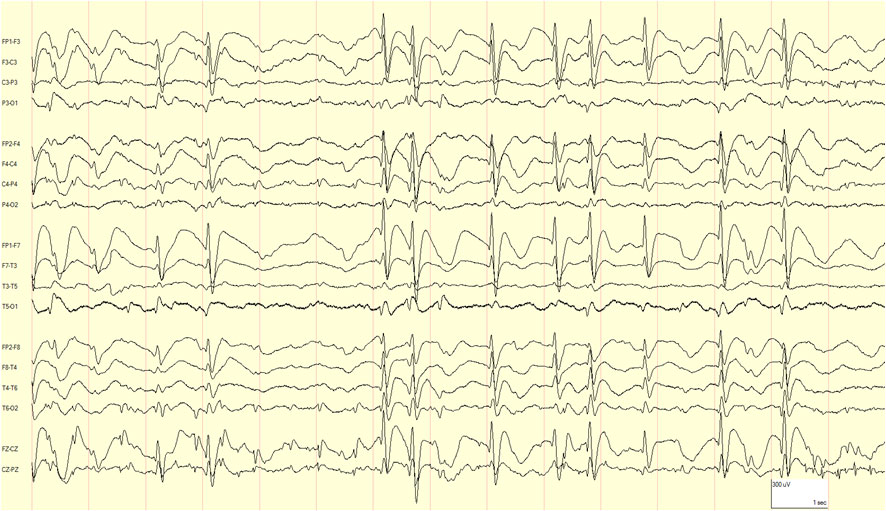

- Overview
- Log In For Videos
- Give Feedback
- Seizure Classification
- Unknown Onset Seizure
- Neonatal Seizure
- Epilepsy Classification
- Generalized Epilepsy
- Focal Epilepsy
- Generalized and Focal Epilepsy
- Unknown Epilepsy
- Epilepsy Syndromes
- Epilepsy Etiologies
- Metabolic Etiologies
- Immune Etiologies
- Infectious Etiologies
- Unknown Etiologies
- Encephalopathy
- Epilepsy imitators
DEVELOPMENTAL AND/OR EPILEPTIC ENCEPHALOPATHY WITH SPIKE-WAVE ACTIVATION IN SLEEP (DEE-SWAS, EE-SWAS)
Background
The background may be normal or there may be focal, multifocal or diffuse slowing, depending on the etiology. Normal sleep architecture is absent or difficult to distinguish due to epileptiform abnormality in sleep.
Interictal
Slow (1.5–2Hz) spike-wave discharges are markedly activated in non-REM (stage I-III) sleep. They may be seen diffusely, focally (typically frontally) or multifocally.

Example of continuous spike-wave in sleep.
CAUTION An overnight sleep EEG may be required, as spike-wave activation in sleep may not be seen during brief periods of sleep.
Activation
The EEG is activated in non-REM sleep.
Ictal
The ictal EEG pattern correlates with the seizure type seen.